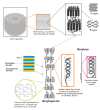Food as Medicine: Curbing Type-2 Diabetes Prevalence Through Consumption of High Amylose Starchy Foods in Sub-Saharan Africa
- PMID: 40922753
- PMCID: PMC12413972
- DOI: 10.34172/apb.025.43630
Food as Medicine: Curbing Type-2 Diabetes Prevalence Through Consumption of High Amylose Starchy Foods in Sub-Saharan Africa
Abstract
The prevalence of nutrition-related non-communicable diseases like diabetes mellitus (DM) is exponentially increasing across the world. Particularly, type-2 diabetes mellitus (T2DM) is prevalent in sub-Saharan Africa (SSA) than in any other region of the world, with a significant effect on mortality and morbidity. T2DM is a disease known to be associated with elevated glucose levels in the blood, caused by numerous factors including dietary and lifestyle changes. Ensuring an adequate supply of a healthy diet through a transformed food system could be a potential strategy to mitigate T2DM in SSA. In plants, starch is the most common storage carbohydrate, and it is the major glucose-releasing carbohydrate in human diets. The rate of starch digestibility varies and is largely due to the proportion of its two polyglucan components, amylose and amylopectin. Although, no medication has been found to effectively treat T2DM, it could be managed through effective postprandial glycemia control. This article reviews the mechanism for slowing down the rate of starch digestion and absorption in the small intestine through direct alteration of amylose and amylopectin in starch crops. This strategy would ensure the supply of healthy diets for consumption and ultimately help to curb the increasing prevalence of T2DM.
Keywords: Food system; Starch; Sub-Saharan Africa; Type-2 diabetes mellitus.
© 2025 The Author (s).
Conflict of interest statement
Authors declare we have no competing financial or personal interest
References
-
- World Health Organization (WHO). The Top 10 Causes of Death. WHO; 2021. Available from: http://www.who.int/mediacentre/factsheets/fs310/en/. Accessed April 7, 2025.
-
- Pastakia SD, Pekny CR, Manyara SM, Fischer L. Diabetes in sub-Saharan Africa - from policy to practice to progress: targeting the existing gaps for future care for diabetes. Diabetes MetabSyndrObes. 2017;10:247–63. doi: 10.2147/dmso.S126314. - DOI
Publication types
LinkOut - more resources
Full Text Sources
Research Materials




